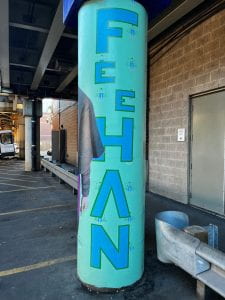Location: 1st row just west of McCabe.
Installed: July ‘22
The city of Chicago had grown exponentially since it’s incorporation in 1834.
The Catholic population by 1880 had grown to over 800,000, due to the rise in the immigrant migration. So the need for education in the Catholic community was great especially after the fire of 1871. Along with this need, was the need for each immigrant group to have a place of it’s own. It was Patrick A. Feehan, the first archbishop of Chicago, who promoted this kind of growth in the city. He was installed as archbishop in 1880.
Feehan saw early in his administration that the development of Catholic education was going to be key in the development of not only the Catholic community, but of the city of Chicago itself. So with this in mind as development was needed in the northern part of Chicago, Feehan asked the Vincentians to consider opening a school for higher education in an area known as ‘Sheffield Neighbors’.
That invitation went to the Vincentians in 1897, as the same Vinnies were well established in St. Vincent DePaul Parish since 1875. Feehan knew the Vincentians from his seminary days of Castlelknock in Ireland. Feehan was well known for acts of mercy for the poor and sick, and saw a kinship in the Vincentians. And the arrangement was made were the Vincentians would be responsible for higher education of young men north of Madison Ave. and the Jesuits would have everything to the south. All parties agreed. The Vincentians opened St. Vincent’s College (using the original church building from 1875) in September of 1898.
Feehan passed in 1902, and this pillar is based on the sculpture of him that was seen in Chicago’s 1893 World’s Fair. An event that Feehan used to promote Catholic education throughout America. This illustration has the added feature of a crystal ball that Feehan seemed to have as he envisioned this growth.

